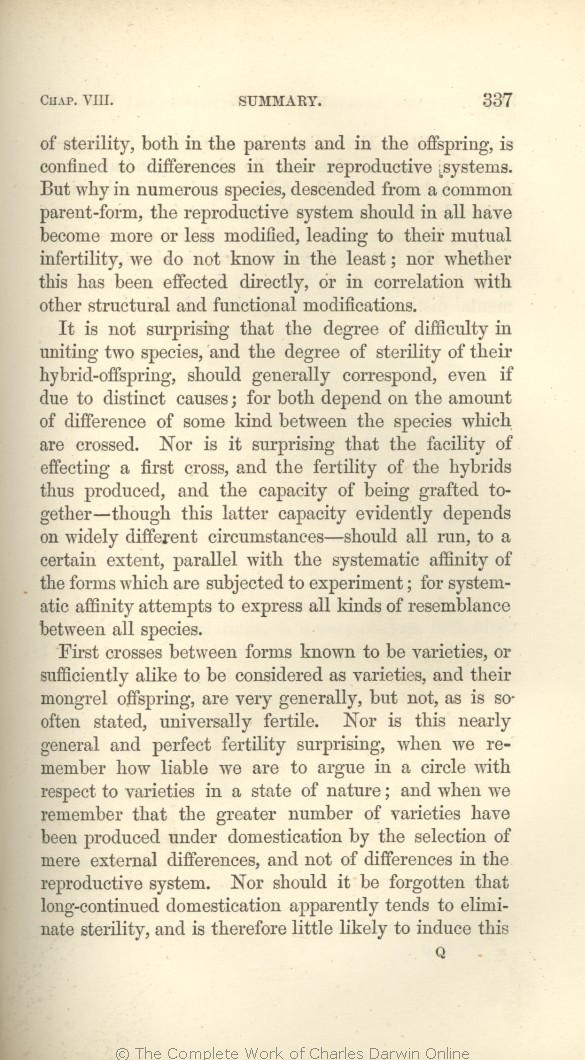of
sterility, both in the parents and in the offspring, is confined to differences in their reproductive systems. | sterility, both in the parents and in the offspring, is confined to differences in their reproductive systems. 1866 |
| the sterility is confined to dif- ferences in the sexual elements. 1869 |
| the sterility of crossed species is confined to differences in their sexual elements. 1872 |
| numerous species, descended from a common parent-form, the reproductive system should in all 1866 |
| the case of species, the sexual elements should so generally 1869 |
| the case of distinct species, the sexual elements should so generally 1872 |
| know 1866 | | know. 1869 | | know; 1872 |
| in the least; nor whether this has been effected directly, or in correlation with other structural and functional modifications. 1866 |
|
but it seems to stand in some close relation to species having been exposed for long periods of time to nearly uniform conditions of life.
1872 |
| OMIT 1869 |
| 1 blocks not present in 1866 1869; present in 1872 1859 1860 1861 | | It is not surprising that the degree of
difficulty in uniting
two species, and the degree
of sterility of
their hybrid-offspring
should generally correspond, though
due to distinct causes; for both depend on the amount of difference of some kind
between the species which are crossed.
|
|
|
It is not surprising that the
degree of | degree of 1866 | degree of 1869 |
| uniting 1866 | | crossing any 1869 |
| degree 1866 | | sterility 1869 |
| sterility of 1866 | sterility of 1869 |
| generally 1866 |
| in most cases 1869 |
| of some kind 1866 |
| OMIT 1869 |
| which are 1866 | which are 1869 |
| attempts to express 1866 |
| includes resemblances of 1869 |
| resemblance 1866 | resemblance 1869 |
| species. 1866 | species. 1869 |
|
|
First crosses between forms known to be varieties, or sufficiently alike to be considered as varieties, and their mongrel offspring, are very generally, but
not, | not, 1861 1866 1869 1872 | | not 1859 1860 |
| as is so often stated, universally 1866 |
| quite universally, 1859 |
| quite uni- versally, 1860 |
| as is so often falsely stated, universally 1861 |
| as is so often stated, invariably 1869 1872 |
| nearly general 1859 1860 1861 1866 | | almost universal 1869 1872 |
| we 1859 1860 1861 1866 1869 | | it is 1872 |
| remember 1859 1860 1861 1866 1869 | | remembered 1872 |
| domestication 1860 1861 1866 1869 1872 | | domesti- cation 1859 |
| not of differences in the reproductive system. 1859 1860 1861 1866 |
| that they have not been long exposed to uniform conditions of life. 1869 1872 |
| forgotten 1866 |
| especially kept in mind, 1869 1872 |
| apparently 1866 | apparently 1869 1872 |
|









